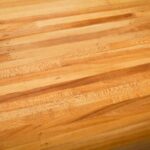When it comes to woodworking, selecting the right type of wood is paramount to achieving success in your projects. The choice of wood can greatly impact the final appearance, durability, and workability of any woodworking endeavor. Understanding the different properties and characteristics of various wood types is essential for creating high-quality pieces that not only stand the test of time but also showcase your craftsmanship.
Woodworking enthusiasts know that each type of wood has its unique qualities that make it suitable for specific applications. Whether you are building furniture, cabinetry, or tackling outdoor projects, considering the durability and strength factors of different wood species is crucial. Some woods are naturally resistant to rot, weather, and insects, making them ideal choices for long-lasting creations.
Aside from durability, workability is another critical aspect to consider when choosing wood. The ease with which a particular wood can be cut, sanded, and shaped can significantly impact the overall woodworking experience. Factors like grain patterns and straightness can determine whether a specific wood will cooperate during intricate woodworking techniques.
Furthermore, aesthetics play a vital role in enhancing the beauty of woodworking projects. Each type of wood brings its own distinct character to a piece through variations in color, grain patterns, and textures. Matching the desired aesthetics and project style with the appropriate wood species ensures visually pleasing outcomes that truly showcase your craftsmanship.
In this comprehensive guide on what wood is good for woodworking, we will explore all these facets in detail. From understanding different wood types to recommendations based on project requirements and budget considerations – this article will empower you with knowledge to make informed decisions when selecting woods for successful woodworking endeavors. So let’s delve into the wonderful world of woodworking and find your perfect match.
Understanding Wood Types
Introduction:
Choosing the right type of wood is crucial for woodworking success. The choice of wood not only affects the final appearance of the project but also its durability and workability. Understanding different wood types is essential in making informed decisions and achieving desired outcomes in woodworking projects.
Differentiating between Softwood and Hardwood:
One of the first steps in understanding wood types is to differentiate between softwood and hardwood. Softwoods, derived from coniferous trees, are generally less dense and have a faster growth rate compared to hardwoods. On the other hand, hardwoods come from deciduous trees and tend to be denser and slower-growing.
Exploring Unique Properties and Characteristics:
Each wood type possesses unique properties and characteristics that affect its suitability for various projects. Softwoods like pine, cedar, and fir are commonly used for construction, framing, outdoor furniture, and decking due to their affordability, strength, and resistance to rot. Hardwoods such as oak, maple, walnut, cherry, and mahogany are favored for furniture making because of their durability, richness in color variation, grain patterns, and overall aesthetic appeal.
Highlighting Popular Wood Species:
Among the vast array of wood species used in woodworking projects, some are more popular than others due to their availability, versatility, and desirable features. Oak is a widely used hardwood known for its strength and durability while providing a classic appearance. Maple offers excellent workability with its smooth texture for intricate detailing.
Walnut is highly prized for its rich brown coloration and beautiful grain patterns that add elegance to any piece. Cherry wood develops a deep reddish-brown patina over time that enhances its visual appeal.
Understanding wood types in woodworking provides a foundation for selecting suitable woods based on specific project needs. In the next sections of this article series about “What Wood Is Good for Woodworking,” we will delve deeper into factors influencing durability and strength when choosing woods (Section 3), workability and ease of use (Section 4), appearance and aesthetics (Section 5), budget considerations (Section 6), sustainability and eco-friendly choices (Section 7), as well as specialized woods for specific projects (Section 8).
By gaining a comprehensive understanding of wood types, woodworkers can make informed decisions to create beautiful, durable, and successful woodworking projects.
Durability and Strength
When it comes to woodworking, choosing the right type of wood is crucial for ensuring the longevity and durability of your projects. The durability and strength of the wood will directly impact the lifespan and structural integrity of your creations. Therefore, it is essential to carefully consider these factors when selecting wood for your woodworking projects.
One important aspect to consider when evaluating wood’s durability and strength is its natural resistance to rot, weather, and insects. Certain wood species have inherent properties that make them more resistant to these factors, while others may require additional treatments or coatings for protection. For outdoor projects such as furniture or decks, it is ideal to select woods with high resistance to decay and insect infestation, such as cedar or redwood.
In addition to resistance factors, understanding which wood species are best suited for specific project types is key in ensuring optimal durability. For example, hardwoods like oak, walnut, or maple are commonly used in furniture and cabinetry due to their sturdiness and ability to withstand daily use. On the other hand, softwoods like pine or fir may be better suited for indoor decorative pieces or projects where weight is not a significant factor.
| Wood Species | Durability Rating (Out of 5) |
|---|---|
| Oak | 5 |
| Teak | 5 |
| Cedar | 4 |
| Pine | 3 |
| Birch | 2 |
It is important to note that while durability is essential, it should also be balanced with other factors such as aesthetics and workability. Therefore, it is advisable to thoroughly research and consult woodworking experts or reputable sources to ensure the best wood selection for your specific project needs. By choosing woods that are both durable and strong, you can create woodworking projects that can withstand the test of time.
Workability and Ease of Use
Woodworking is not just about the final product; it is also about the process of crafting and creating with wood. One of the crucial factors that can greatly enhance or hinder this process is the workability and ease of use of the chosen wood. In this section, we will delve into what makes certain woods a joy to work with, exploring their grain patterns, straightness, and ease of cutting, sanding, and shaping.
Grain Patterns and Straightness
When selecting wood for a woodworking project, it is important to consider the grain patterns and straightness of the wood. Grain patterns refer to the arrangement of fibers within a piece of wood. Some woods have distinct grain patterns that can add visual interest to a project, such as tiger maple or burled walnut.
These unique grain patterns can create stunning visual effects when finished properly. On the other hand, some projects may require woods with more uniform grains, such as in modern furniture designs.
In addition to grain patterns, straightness plays an important role in the workability of wood. Straighter pieces of wood are generally easier to work with since they require fewer corrections during cutting and shaping processes. However, it is worth noting that some projects may call for curved or irregularly shaped pieces of wood. In such cases, selecting woods with natural curves or figuring can save time and effort in achieving desired shapes.
Cutting, Sanding, and Shaping
Not all woods are created equal when it comes to ease of cutting, sanding, and shaping. Some hardwoods like cherry or walnut are known for their relatively easy workability due to their moderate density and consistent grain structure. They can be easily cut with hand tools or power tools without excessive resistance.
On the other hand, certain exotic hardwoods might pose challenges when cutting or shaping due to their hardness or interlocking grains. These woods may require sharp tools or specialized techniques to achieve desired results. Sanding is another aspect to consider, as some woods may have open pores that require more effort to achieve a smooth finish.
It is recommended for woodworkers at different skill levels to experiment with various types of woods to understand their workability and find the ones they enjoy working with the most. This hands-on experience will help them develop preferred techniques and gain confidence in their abilities.
Recommendations and Considerations
For beginners or those looking for easier woodworking experiences, woods like pine, poplar, or birch are often recommended due to their familiar workability and affordability. These softwoods are generally more forgiving on tools and can be easily shaped or sanded.
For more experienced woodworkers, hardwoods like oak, maple, or mahogany offer a wide range of possibilities due to their workability and durability. These hardwoods are versatile enough to be used in various projects ranging from furniture making to intricate joinery.
Ultimately, the choice of wood should consider both the desired aesthetic appeal of the project as well as the skill level and preferences of the woodworker. By carefully selecting woods that align with a project’s requirements while considering one’s comfort and ease in working with specific wood species, woodworkers can find joy in every step of the woodworking process.
Appearance and Aesthetics
Woodworking is not just about creating functional pieces; it is also an art form that values the beauty and aesthetics of the final product. The choice of wood has a significant impact on the appearance of woodworking projects, as different wood species bring their unique beauty and character to the table. When it comes to choosing woods for your projects, it’s important to consider how different species can enhance the overall look and feel of your creations.
One key aspect to consider when selecting wood for its appearance is the natural color variations. Different woods come in a wide range of colors, from light tones like maple and birch to darker ones like walnut or mahogany. Some woods even feature striking grain patterns that add visual interest to your projects. For example, oak often showcases beautiful cathedral grain patterns, while figured woods such as curly maple or quilted maple display stunning swirling or wavy figures.
Textures also play a crucial role in enhancing the aesthetics of woodworking projects. Some woods have a smoother texture, which can provide a sleek and modern look, while others have more pronounced textures that give a rustic or vintage vibe. For instance, beautifully textured woods like cedar or reclaimed barnwood can add depth and character to furniture pieces or wall installations.
To achieve the desired aesthetics for your project, it’s essential to carefully match the wood species with the style you want to achieve. A rustic farmhouse-style piece may benefit from using distressed and weathered-looking woods like reclaimed pine or barnwood. On the other hand, contemporary designs might call for smoother and cleaner-textured woods like ash or beech.
Budget Considerations
When it comes to woodworking, choosing the right type of wood is crucial for achieving success in your projects. However, high-quality wood can often come with a hefty price tag, making it important for woodworkers to consider budget-friendly options without compromising on quality and appearance. This section will explore some affordable wood choices that are perfect for every woodworker.
One cost-effective option is pine, which is classified as a softwood. Pine is widely available and relatively inexpensive, making it an ideal choice for beginners or those on a budget. It has a light color with prominent grain patterns, giving it a natural beauty that can enhance various woodworking projects. Pine is also easy to work with, making it suitable for both hand and power tools.
Another affordable option is plywood, which consists of layers of thin veneers glued together. Plywood is not only economical but also offers stability and strength due to its construction. It comes in different grades and finishes, allowing woodworkers to choose the most suitable option based on their project requirements.
In addition to pine and plywood, there are several other budget-friendly woods available such as poplar, birch, and maple. These woods offer versatility and good workability while still providing an attractive appearance. It’s important to note that even within these woods there can be variations in price based on factors like grade and quality.
| Wood Species | Average Price per Board Foot |
|---|---|
| Pine | $2-3 |
| Plywood | $1-10 (depending on grade) |
| Poplar | $3-6 |
| Birch | $4-8 |
| Maple | $4-10 |
When working on a tight budget, it’s essential to do thorough research and compare prices from different suppliers. Additionally, consider purchasing wood in bulk or during sales to further reduce costs. By being mindful of your budget and exploring these affordable wood options, you can create beautiful woodworking projects without breaking the bank.
Sustainability and Eco-friendly Choices
Woodworking is not only a craft but also an opportunity to promote environmental responsibility. By choosing sustainable and eco-friendly wood options, woodworkers can minimize their impact on the environment while still creating beautiful projects. In this section, we will discuss the significance of making environmentally conscious choices in woodworking and provide recommendations for eco-friendly wood species that promote responsible forestry practices.
When it comes to sustainability in woodworking, one crucial aspect is selecting wood from well-managed forests. Woodworkers should look for certifications such as the Forest Stewardship Council (FSC) or the Sustainable Forestry Initiative (SFI) when sourcing their materials. These certifications ensure that the wood comes from forests managed using sustainable practices, such as replanting trees and protecting wildlife habitats.
Furthermore, certain wood species are inherently more sustainable due to their rapid growth rates or abundant availability. For example, bamboo is an excellent choice for eco-conscious woodworkers because it grows quickly and can be harvested within a few years without harming its root system. Additionally, reclaimed or salvaged wood offers an environmentally friendly solution by repurposing existing materials instead of cutting down new trees.
Here are some eco-friendly wood species that you can consider for your woodworking projects:
- Bamboo: Known for its quick growth and versatility, bamboo is a highly sustainable option.
- Black Locust: This hardwood species is incredibly durable and resistant to rot, making it suitable for outdoor projects.
- Reclaimed Wood: Salvaged from old buildings or furniture, reclaimed wood not only reduces waste but also adds unique character to your projects.
- American Elm: With a stunning grain pattern and excellent stability, American Elm is a sustainable alternative to endangered woods like American Chestnut.
By prioritizing environmental responsibility in your woodworking projects, you can contribute to the conservation and preservation of our natural resources. Remember, every small choice makes a difference, and by opting for sustainable and eco-friendly wood options, you can be part of a movement towards a greener future in the world of woodworking.
Specialized Woods for Specific Projects
In the world of woodworking, there are certain projects that require specific types of wood to achieve the desired results. Whether you’re looking to create a musical instrument, intricate carvings, or even a boat, choosing the right wood is essential. In this section, we will explore some specialized woods that are tailor-made for these specific projects.
When it comes to musical instruments, sound quality and resonance are paramount. Exotic woods such as mahogany, spruce, maple, and ebony are commonly used in the construction of guitars, violins, and pianos due to their unique acoustic properties. These woods not only enhance the tone but also provide durability and stability necessary for these instruments.
Carvers often lean towards softer woods like basswood and butternut due to their easy workability and ability to hold fine details. Their smooth grain patterns allow for intricate carving techniques while maintaining structural integrity.
Boat building requires wood that can withstand constant exposure to water and resist rotting. Teak is a popular choice because of its natural resistance to decay and its high oil content that makes it impervious to moisture damage. Additionally, cedar and cypress offer excellent water resistance properties while providing lightweight yet strong construction materials.
In addition to these specialized projects, there are unique wood species known for their figure and unusual characteristics that can add an extra level of beauty and intrigue to any woodworking project. Burls, which are abnormal growths found on trees, offer mesmerizing swirls and patterns when turned or incorporated into furniture pieces. Another example is figured wood like quilted maple or birdseye maple which feature distinctive swirling or circular patterns in their grains.
When it comes to specialized woodworking projects, understanding the unique properties of different woods is crucial for achieving outstanding results. By selecting woods tailored specifically for each project type – whether it be a musical instrument or a boat – woodworkers can ensure that their creations are not only aesthetically pleasing but also functional and durable.
Conclusion
In conclusion, selecting the right wood for your woodworking projects is crucial for achieving success in both the appearance and functionality of your final piece. Throughout this article, we have explored the various factors to consider when choosing wood, including understanding wood types, durability and strength, workability and ease of use, appearance and aesthetics, budget considerations, sustainability and eco-friendliness, as well as specialized woods for specific projects.
By differentiating between softwood and hardwood and discussing their properties and characteristics, you now have a better understanding of how each type of wood can impact your project. We have also delved into durability factors, such as resistance to rot, weather, and insects, which are important considerations depending on the intended use of your woodworking piece.
Additionally, we have examined workability aspects like grain patterns and ease of cutting and shaping. This knowledge will allow you to choose woods that will make your woodworking experience enjoyable while achieving the desired outcome. Moreover, we have emphasized the importance of considering aesthetics when selecting wood species by discussing their natural color variations, grain patterns, and textures.
Affordability is also an essential factor for many woodworkers. By exploring cost-effective wood options without compromising quality or appearance, we hope to assist you in finding affordable choices for your projects. Furthermore, we have highlighted the significance of sustainability in woodworking practices by discussing environmentally friendly wood choices and certifications.
Lastly, we have touched upon specialized woods tailored to specific project types like musical instruments or boat building. No matter what niche you find yourself in within the world of woodworking, there are unique woods available that will enhance your craftsmanship.
As a woodworker armed with this knowledge regarding different aspects to consider when selecting wood for your projects including its type,
durability
and strength,
workability
and ease-of-use,
appearance
and aesthetics,
budget
considerations,
sustainability
and eco-friendly choices as well as specialized woods tailored towards specific projects,
you are now empowered to make informed decisions in choosing the perfect wood for your woodworking endeavors. Prioritize the specific requirements of each project and seek out the wood species that align with those needs. By doing so, you can ensure that your woodworking projects not only meet but exceed your expectations.
So go forth with confidence, armed with this newfound knowledge, and embark on your woodworking journey knowing that the choice of wood is no longer a mystery but rather an exciting opportunity to enhance the beauty and functionality of your creations. Happy woodworking.
Frequently Asked Questions
What is the best wood for beginners woodworking?
When it comes to choosing the best wood for beginners in woodworking, many experts recommend starting with softer woods such as pine or poplar. These woods are readily available, relatively affordable, and easy to work with due to their straight grain and low density.
They are also forgiving when it comes to making mistakes since they don’t easily split or splinter. Beginners can practice essential woodworking techniques and gain confidence using these softer woods before venturing into more challenging projects with harder woods.
What’s the highest quality wood?
Determining the highest quality wood is subjective and depends on various factors such as intended use, personal preferences, and regional availability. However, certain species of hardwoods are commonly associated with superior quality due to their properties.
Woods like mahogany, teak, walnut, maple, and oak are often regarded as high-quality choices due to their strength, durability, attractive grain patterns, and overall aesthetic appeal. These woods are commonly used for furniture making or other high-end applications where exceptional quality is desired.
What is considered good wood?
Good wood typically refers to wood that possesses desirable qualities such as strength, durability, stability, appearance, and workability. Different types of wood exhibit varying degrees of these qualities based on factors like natural characteristics (e.g., grain patterns), density (hardness), moisture content (stability), and overall resilience against wear and tear.
Woods that have been properly dried and seasoned without excessive defects like knots or warping are generally considered good choices for woodworking projects since they offer greater ease of use during construction and tend to yield more aesthetically pleasing results. Ultimately, what is considered good wood may vary depending on the specific application or project requirements.

Hi everyone! I’m a woodworker and blogger, and this is my woodworking blog. In my blog, I share tips and tricks for woodworkers of all skill levels, as well as project ideas that you can try yourself.





